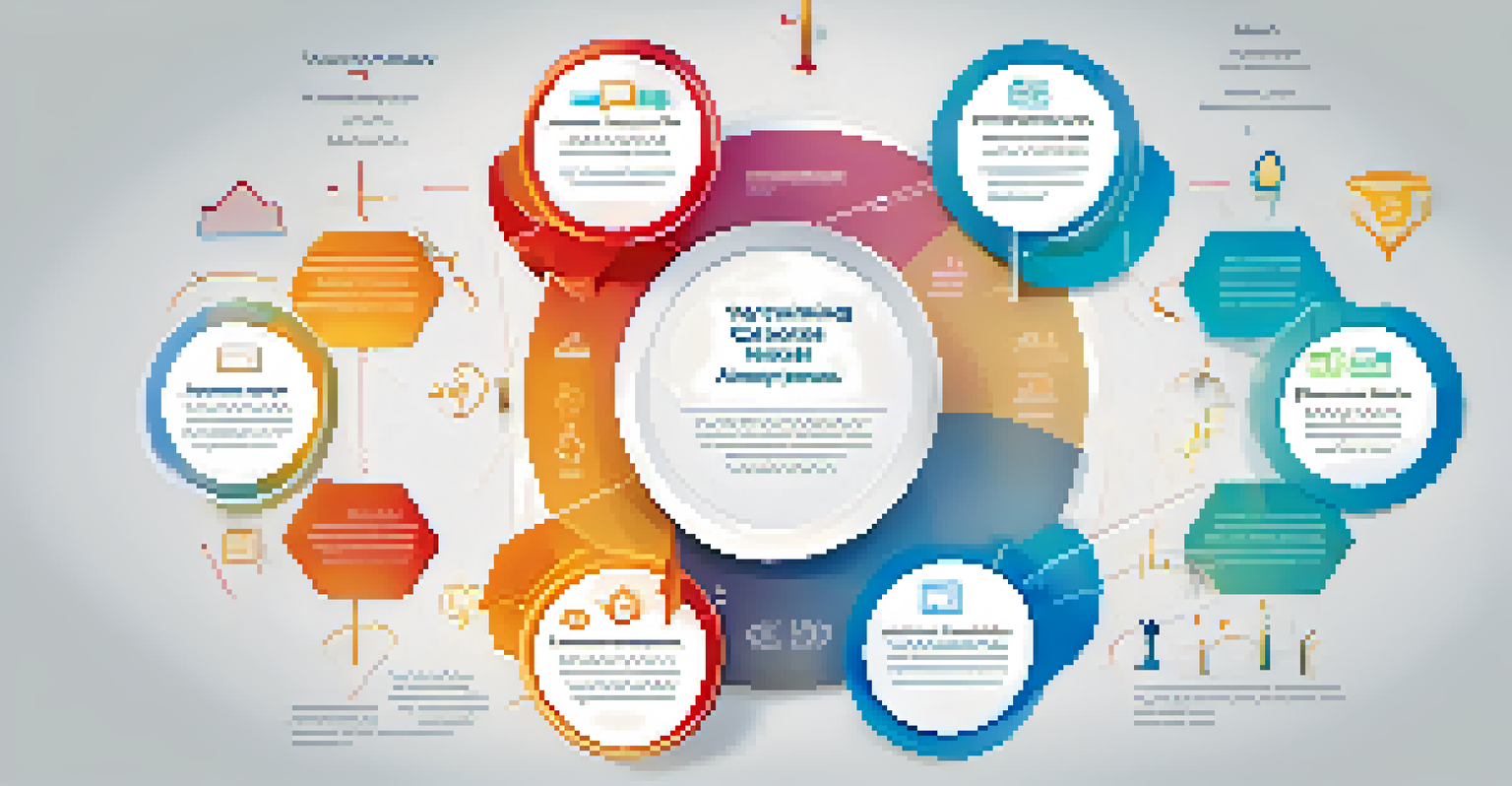Developing a Training Needs Analysis for Your Organization

Understanding Training Needs Analysis and Its Importance
A Training Needs Analysis (TNA) is a systematic process that identifies the skills and knowledge gaps within your organization. By understanding what employees need to learn, you can tailor training programs that truly meet their needs and enhance overall performance.
An investment in knowledge pays the best interest.
Think of TNA as a roadmap for your workforce development. Just as a GPS guides you to your destination, a well-executed TNA directs your training efforts towards areas that will yield the most benefit for both employees and the organization.
By investing time in a TNA, you ensure that training is not just a checkbox activity but a strategic initiative that aligns with your business goals. This leads to a more competent, confident, and motivated workforce.
Gathering Data: Methods for Effective Needs Assessment
The first step in developing a TNA is to gather relevant data. This can be achieved through surveys, interviews, focus groups, or observations. Each method has its strengths, so consider using a combination to get a well-rounded view of training needs.

For example, surveys can provide quantitative data, while interviews can offer qualitative insights. Think of this phase as collecting puzzle pieces; each piece helps to form a clearer picture of what training is necessary for your team.
Importance of Training Needs Analysis
A Training Needs Analysis (TNA) identifies skills gaps, ensuring training aligns with employee and organizational goals.
Remember, involving employees in this process can yield valuable feedback and increase buy-in for future training initiatives. Their insights can help identify skills that may not be apparent from a managerial perspective.
Analyzing the Data to Identify Skill Gaps
Once you've gathered your data, the next step is analysis. This involves reviewing the information to identify common themes and skill gaps that need addressing. It’s crucial to distinguish between what employees want to learn and what they actually need for their roles.
Training is not a cost, it’s an investment.
Imagine sifting through a treasure chest; you want to find the gems that will make the most significant impact on your team's performance. By focusing on high-priority areas, you can allocate resources effectively.
Additionally, consider the future needs of your organization as well. Skills that are vital today may not be enough for tomorrow, so look for trends and anticipate changes in the industry.
Setting Objectives for Training Programs
With identified skill gaps in hand, it’s time to set clear objectives for your training programs. These objectives should be specific, measurable, achievable, relevant, and time-bound (SMART). For instance, instead of saying 'improve communication,' specify 'increase team collaboration scores by 20% in six months.'
Setting SMART objectives not only provides clarity but also helps in evaluating the success of training initiatives later on. Think of it as setting a destination before starting a journey; it keeps everyone focused and aligned.
Gathering Data for Effective Assessment
Utilizing various methods like surveys and interviews helps create a comprehensive understanding of training needs.
Moreover, well-defined objectives can motivate employees, giving them a clear understanding of what they will gain from the training. This can lead to higher engagement and participation in the programs.
Designing Training Programs to Meet Identified Needs
With objectives established, the next step is designing the training programs. Tailor your training methods—be it workshops, e-learning, or on-the-job training—to suit different learning styles and preferences. This ensures that all employees can engage effectively with the content.
For instance, if your team thrives on hands-on experience, incorporate simulations or role-playing exercises. Think of your training program as a buffet; offering a variety of options allows employees to choose what best suits their palate.
Incorporating real-world scenarios and practical applications into your training can also enhance retention and application of knowledge. Employees are more likely to remember what they can relate to and practice in their daily roles.
Implementing the Training Programs Effectively
Now that your training programs are designed, it’s time for implementation. Consider timelines, resources, and the logistics of delivering training. Effective communication about the training schedule and objectives is essential to ensure everyone is on the same page.
Think of implementation as launching a new product; you want to generate excitement and be clear about the benefits. Regular updates and reminders can keep the momentum going and encourage participation.
Evaluating Training Program Success
Assessing the effectiveness of training through feedback and performance changes is crucial for continuous improvement.
Moreover, providing support during the training—such as mentoring or follow-up sessions—can enhance the learning experience. Employees are more likely to apply what they learn when they feel supported and encouraged.
Evaluating the Effectiveness of Training Programs
After the training has been delivered, evaluating its effectiveness is crucial. This can be done through surveys, assessments, or observing changes in performance. The goal is to determine whether the training met its objectives and where improvements can be made.
Imagine a gardener assessing the growth of plants after a season; you want to see which methods are yielding the best results and where adjustments are needed. Similarly, this evaluation will inform future training initiatives.

Feedback from participants is essential in this process. It not only helps in refining training content but also empowers employees by giving them a voice in their learning journey.